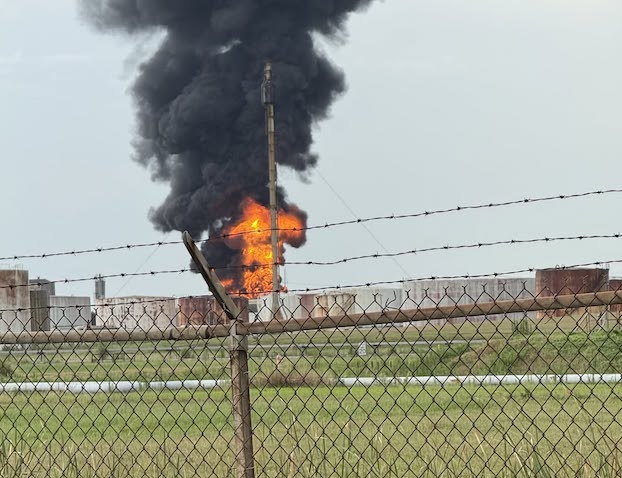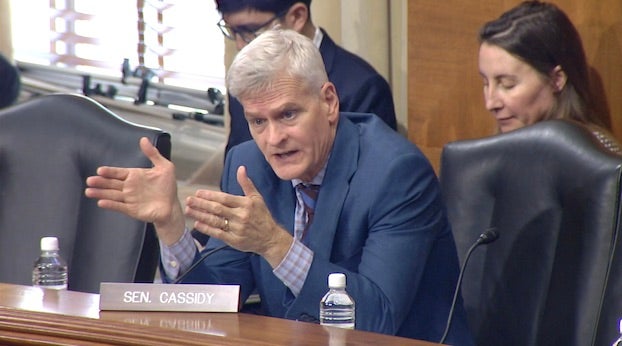Reader takes issue with column on contrails
Published 5:32 am Wednesday, February 15, 2017
The Informer on Monday explained how water condenses around particles in jet exhaust and creates contrails, or thin clouds that trail planes at high altitudes.
The column then noted that, despite repeated debunking, some people believe the cloud trails — which they call “chemtrails” — are evidence of a secret government program to use chemical spraying to control either people or the climate or both.
And it pointed out that some of those people believe air spirits called sylphs wage war on the chemtrails on humanity’s behalf.
Trending
That day a reader emailed The Informer.
“I’ve been following the research around geoengineering for 8 yrs.,” she wrote. “If your report was solely taken from the AP, you are not ‘Informed’. An independent search will reveal different evidence.”
Monday’s column nowhere mentioned The Associated Press, a widely respected news service. But it did identify and quote extensively two of the many sources used in answering the question: a NASA-maintained website and an article by scientist Phil Plait, who rose to prominence by debunking myths and correcting misconceptions about science.
The reader’s email included a link to a website about climate engineering and other conspiracy theories — a site that appears on a list of “False, Misleading, Clickbait-y, and/or Satirical ‘News’ Sources” disseminated last year by a university media professor.
The Informer visited the site — geoengineeringwatch.org — and looked over some of the articles, including one from January that claims widespread spraying has left the atmosphere saturated in toxins and cites an article about a scientific study of high-altitude radiation levels.
The site’s story, written by Dane Wigington, begins by talking about travelers inhaling “toxic particulates” as their aircraft traverse “various layers of solar radiation atmospheric haze” and claims that “radiation clouds at aviation altitudes also pose a dire threat.”
Trending
The text links to an article at http://news.spaceweather.com that reports on the above-mentioned study, which is titled “Global real-time dose measurements using the Automated Radiation Measurements for Aerospace Safety (ARMAS) system.”
The Geoengineering Watch story says the study “is now acknowledging the radiation clouds and the dangers they present to air travelers,” and it quotes the opening two paragraphs of the Spaceweather.com story.
But those paragraphs have nothing to do with “toxic particulates” or “atmospheric haze.” They instead refer to — notice the quotation marks — “radiation ‘clouds’ ” and then explain that the radiation surges researchers report are “analogous to localized clouds,” not actual atmospheric clouds.
The Geoengineering Watch story follows with a paragraph of its own about “anthropogenic activity negatively affecting the atmosphere and ozone layer” and “climate engineering aerosol spraying and the accompanying radio frequency/microwave transmissions … wreaking havoc on the biosphere, the atmosphere, and all of Earth’s life support systems.”
The problem? The Spaceweather.com article and the study refer to cosmic rays, which originate from space and have nothing to do with “anthropogenic activity” — that is, caused by people — as referred to in the Geoengineering Watch story.
Additionally, cosmic rays are high-energy subatomic particles — think: protons and electrons, parts of atoms — that pass through matter, including the fuselage of a plane and its passengers’ bodies.
That’s not the same as “particulates,” which refers to tiny, breathable pieces of things in the air. And the reason for the “radiation ‘clouds’ ”? From a part of the Spaceweather.com article not cited in the Geoengineering Watch report:
What’s going on?
“We’re not sure,” says (lead researcher Kent) Tobiska, “but we have an idea.”
Earth’s magnetic field, he explains, traps many cosmic rays and solar energetic particles in structures called “magnetic bottles.” These bottles can be leaky. Even minor gusts of solar wind can cause the trapped particles to squirt out the ends of the bottle, sending beams of particles down toward the Earth below.
“Basically, we think we might be flying through some of these leaky particle beams,” says Tobiska.
l
The Informer answers questions from readers each Sunday, Monday and Wednesday. It is researched and written by Andrew Perzo, an American Press staff writer. To ask a question, call 494-4098 and leave voice mail, or email informer@americanpress.com.





